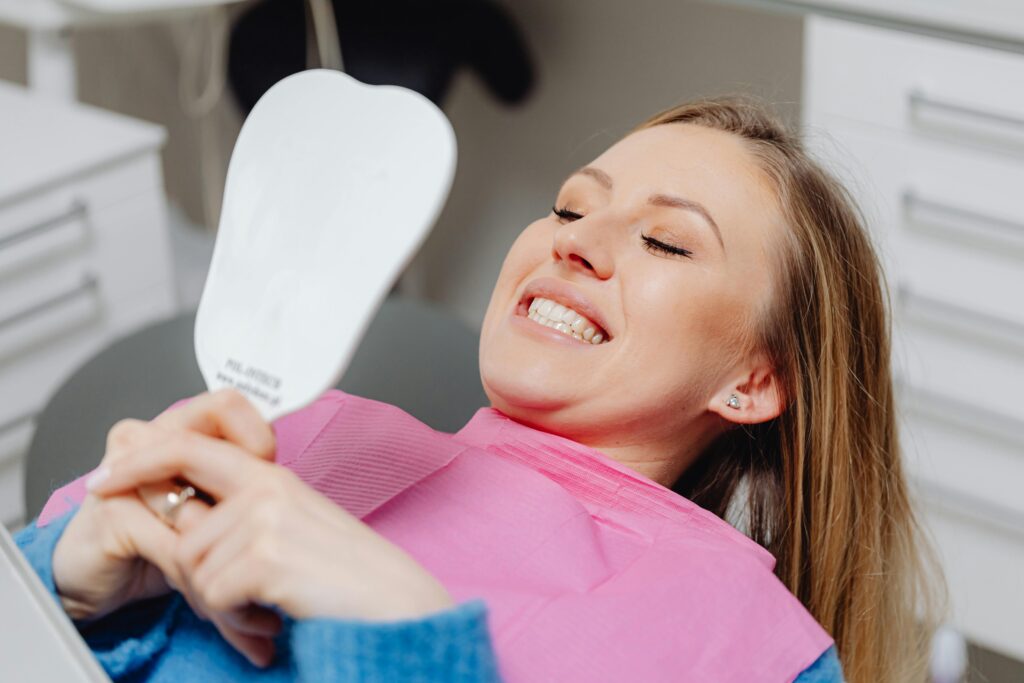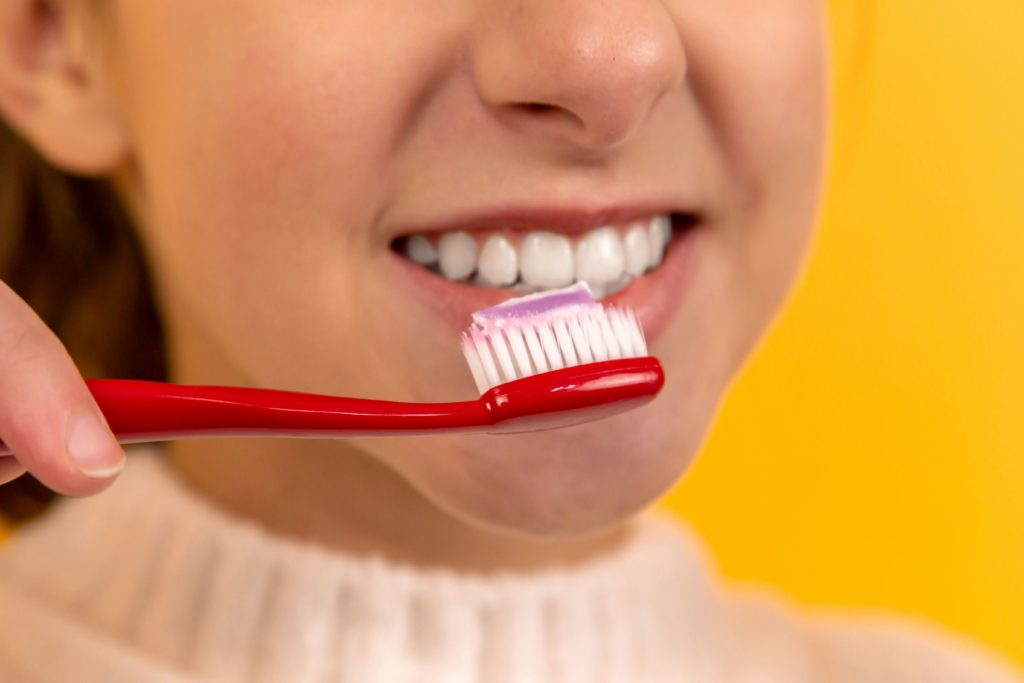Whitening your teeth can be a great boost to your confidence, giving you a brighter, whiter smile. But keeping your teeth white after a whitening treatment requires some effort and care. Without proper maintenance, stains can return, dulling the brightness you worked hard to achieve.
Fortunately, by making a few changes to your daily routine, you can maintain that radiant smile for longer. Here’s how to keep your teeth looking fresh and bright after a whitening treatment.
Avoid Stain-Causing Foods and Drinks
Certain foods and drinks are notorious for causing stains on teeth. Dark-colored beverages like coffee, tea, red wine, and sodas can easily stain your teeth if consumed frequently. Acidic foods and drinks, such as citrus fruits and tomato-based sauces, can also erode enamel, making your teeth more susceptible to discoloration.
If you do consume these foods and drinks, consider using a straw for beverages to limit direct contact with your teeth. Rinsing your mouth with water afterward can also help minimize the staining effects.
Maintain Good Oral Hygiene Habits
Proper oral hygiene is key to preserving the results of your whitening treatment. Brushing your teeth twice a day and flossing daily help remove plaque and debris that can lead to stains. Using a whitening toothpaste once or twice a week can also help maintain the brightness of your teeth.
Don’t forget to replace your toothbrush or electric toothbrush head regularly, as worn-out bristles are less effective at cleaning your teeth. Additionally, consider using an antibacterial mouthwash to help remove bacteria and freshen your breath.
Use Touch-Up Whitening Products
Over time, your teeth may start to lose some of their brightness, especially if you consume staining foods and drinks. To combat this, consider using touch-up whitening products. Whitening strips, gels, or pens can help maintain your white smile between professional treatments.
However, avoid overusing these products, as excessive whitening can lead to tooth sensitivity and gum irritation. Always follow the product’s instructions carefully and consult your dentist if you’re unsure.
Stay Hydrated
Drinking water throughout the day is not only good for your overall health but also helps keep your teeth white. Water helps rinse away food particles and staining substances that may stick to your teeth. Staying hydrated also promotes saliva production, which naturally cleans your teeth and neutralizes harmful acids.
After consuming stain-causing foods or drinks, a quick rinse with water can help reduce their impact on your teeth.
Quit Smoking
Smoking is one of the leading causes of yellow and stained teeth. The tar and nicotine in cigarettes quickly discolor teeth, making it harder to maintain a white smile. Quitting smoking not only improves your overall health but also helps preserve the results of your whitening treatment.
If you’re struggling to quit smoking, seek support from healthcare professionals or join a support group to increase your chances of success.
Schedule Regular Dental Cleanings
Professional dental cleanings are essential for maintaining your oral health and ensuring your teeth stay white. Dentists use specialized tools to remove plaque, tartar, and surface stains that can dull your smile. Regular cleanings also help prevent gum disease and other oral health issues that can affect the appearance of your teeth.
Aim to visit your dentist every six months for a cleaning. This will not only keep your teeth white but also promote better overall dental health.
Be Mindful of Your Oral Care Products
Using the right oral care products is crucial for maintaining your white smile. Choose a toothpaste with whitening ingredients like hydrogen peroxide or baking soda, but be cautious not to use these products too often, as they can be abrasive to enamel over time.
Opt for a soft-bristled toothbrush to avoid damaging your gums and enamel, and choose a mouthwash that doesn’t contain alcohol, which can dry out your mouth and affect your oral health.
Limit Sugary and Acidic Foods
Sugar and acid are two major culprits when it comes to staining and damaging your teeth. Sugary foods promote the growth of bacteria that lead to plaque buildup, while acidic foods wear down enamel, making it easier for stains to set in.
Limiting your intake of sweets, sodas, and acidic snacks can protect your teeth and prolong the results of your whitening treatment. When you do indulge, brush your teeth or rinse with water afterward to prevent damage.
Protect Your Teeth from Trauma
Chipped or damaged teeth can make maintaining a white smile more difficult. Accidents, teeth grinding, and even biting down on hard foods can cause cracks or chips, making your teeth more prone to staining.
If you grind your teeth at night, consider wearing a nightguard to protect your teeth from damage. Additionally, avoid using your teeth to open packages or bite into hard objects that could cause harm.
Conclusion
Maintaining your white smile after a whitening treatment doesn’t have to be difficult. By making a few simple changes to your diet and oral hygiene routine, you can keep your teeth looking bright and beautiful for a long time. Remember to avoid stain-causing foods, practice good oral care, and see your dentist regularly to protect your investment in a whiter smile.
FAQs
1. How long will my teeth stay white after whitening treatment?
The results of a whitening treatment can last anywhere from six months to two years, depending on your habits and lifestyle. Avoiding staining foods and maintaining good oral hygiene can help extend the effects.
2. Can I drink coffee after whitening my teeth?
While it’s best to avoid coffee immediately after whitening, using a straw and rinsing your mouth with water afterward can help reduce the staining effects. Consider cutting back on dark beverages to maintain your white smile.
3. Are touch-up whitening treatments safe?
Yes, touch-up whitening treatments are generally safe when used as directed. However, overuse can lead to tooth sensitivity and gum irritation, so follow the instructions carefully and consult your dentist if needed.
4. Will smoking affect my white teeth?
Yes, smoking is a major cause of yellow and stained teeth. Quitting smoking will help maintain your white smile and improve your overall oral health.
5. How often should I get a dental cleaning after whitening?
You should continue visiting your dentist for a cleaning every six months, as this helps remove plaque, tartar, and surface stains. Regular cleanings will help maintain the results of your whitening treatment.
6. Can I use regular toothpaste after whitening treatment?
Yes, you can use regular toothpaste, but opting for a whitening toothpaste a few times a week can help maintain the brightness of your smile. Just be cautious not to use abrasive products too frequently.
7. What should I do if my teeth start to look yellow again?
If your teeth begin to lose their brightness, consider using a touch-up whitening product or scheduling a professional touch-up treatment with your dentist. Regular cleanings and avoiding staining foods will also help.
8. Can I eat after teeth whitening?
It’s best to avoid dark-colored and acidic foods for at least 48 hours after whitening. Stick to white or light-colored foods to protect the results and prevent staining.



